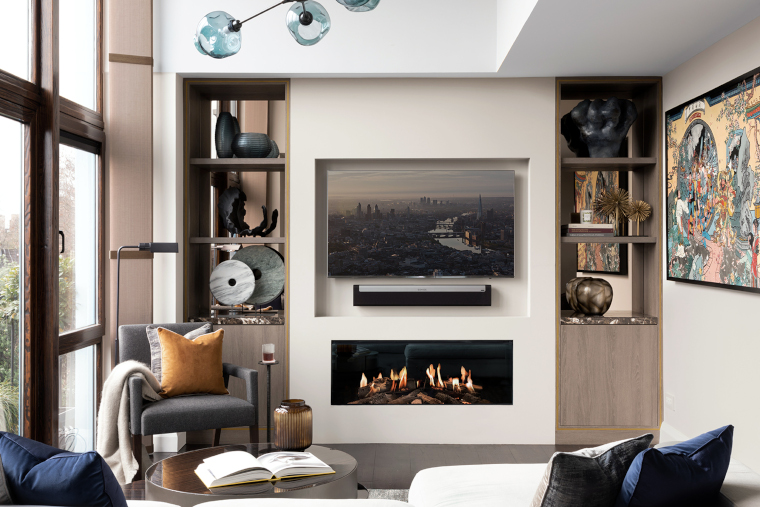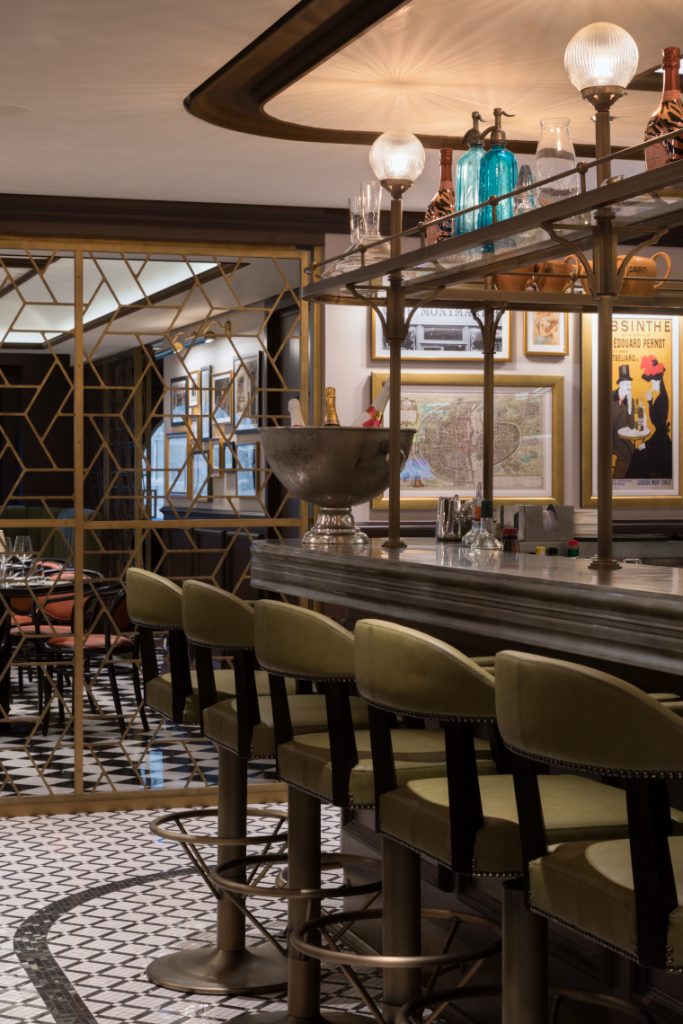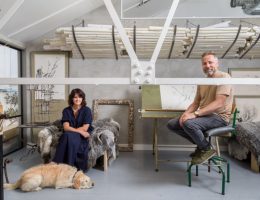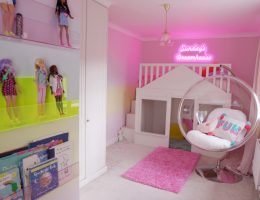Adẹ̀kọ́ & Co is a multi-disciplinary design studio. Tolù Adẹ̀kọ́ tells me where his passion for interiors began and why greater racial diversity would benefit the whole industry
Did you train as an interior designer? Yes. I studied Interior Design BA Hons at Bournemouth University. It was a four year course, which provided me with broad experience and allowed me to do a placement year. I had the opportunity of working for the late Keith Hobbs, who was the Founder of United Designers, a luxury international interior studio. The experience exposed me to interior architecture, space planning and the layering of finishes and surfaces to create lasting interiors.
I was often in the studio library, referencing architectural and design books of Mid-Century Modernism and Art Deco, as well as working with various materials to build the interior palettes from wood, textiles and glass to stone, leather, and panelling. From then it birthed my hunger for high-end interior design at an international level.
What first attracted you to the profession? As a young child, I vividly remember watching the show Changing Rooms, hosted by Laurence Llewelyn-Bowen and Carol Smillie. I was really engaged with that programme, I just loved everything about it. They didn’t always produce great interiors, but when they did get it right, that joy from the room transformation. I just knew that is what I wanted to do.
At secondary school there was a product design program, where I was mentored by Sir Terence Conran on furniture design, which taught me a lot about functionality and craftsmanship.
Tell me about the studio? The studio focuses on hospitality work, which includes restaurants, hotels, bars, as well as cruise ship interiors. Currently we are working on a few international projects in Hong Kong and Morocco.
But we also work on residential. Most recently we have completed the refurbishment of a Victorian warehouse in Chiswick, London, which we transformed into a luxury penthouse.

Can you describe the Adẹ̀kọ́ style? The Adẹ̀kọ́ style is that there is no Adẹ̀kọ́ style. Like, I personally do not have a set ‘style,’ and I encourage the studio to be the same.
Our design aesthetic is very much dictated by the history of the location, the client’s needs and numerous factors. We try to unite each of our projects under a sort of quality control standard, where we are focused on the artistry from the architectural details down to the very final decorations.
Our emphasis is on creating a strong concept, rather than focusing on style. That being said, the studio has lots of love for historic architecture and we try to reference it, so that each project is a collage of different eras. Every project is a blend of layering design references, details, materials, and colours with the goal to birth something that is original now.
The British Institute of Interior Design (BIID) did some research into diversity in the industry which showed that although young people from ethnic minorities are choosing to study interior design, few of them then go on to pursue it as a career. Why do you think this is? Firstly, thank you for asking me, this is an issue that often plays in my mind. And that is a sad thing to see.
This is an issue that stems from two points. From one side there is not enough cultural diversity within the interior design industry. The design industry is not just made up of interior designers, but also suppliers, makers, contractors, journalists, etc. And there isn’t enough representation because there isn’t enough intentionality from these businesses to looking at their studios and their teams and think “Why is it that everybody is one race? Why isn’t there diversity going on here?” There is something that could be done from the industry’s perspective.
I think initiatives such as United In Design are making a good effort to try and reduce this gap, but apprenticeships for ethnic minorities are only a handful compared to the thousands of people that are trying to get their foot in the door, but are unable to.
On the other side, there is also a cultural taboo when it comes to design and creative professions within ethnic minority communities, especially among the older generation. They tend to look down on the industry as financially unsustainable, meaning that it is impossible to rely on a creative career for a stable income. As a result parents tend to discourage their children, or they do not know how best to support them through a career in the creative field.
This is a cultural problem, but I think this also can be partially solved by the industry. Organising workshops where parents are involved, so that both parents and young people can meet interior designers and similar creative professionals and the parents can ask questions and placate their doubts. If we can assist parents in answering some of these questions from grassroots such as primary and secondary school, they will have more confidence in their child’s chosen field and will be able to support them more.

Does your Nigerian heritage influence your work in any way? I come from a fourth-generation textile family. I am endlessly fascinated by textiles, the making of textiles, as well as the textures and finishes from the diverse types of weaves, embroideries and print techniques.
My heritage is close to my heart and I am constantly trying to include traditional Nigerian textiles in my projects. It just adds a cultural layer to each space. I also love working with artisans, woodworkers and local artists, especially in Lagos. They are so creative, they have a real passion for their craft. I am always trying to see what I could commission for my projects. It is a wonderful way to collaborate and add context, that cultural layer I was talking about.
How would the interior design industry benefit from having more diverse talent? Each interior designer sees things from a different lens and we design from a unique perspective. True design is about solving problems creatively and finding creative solutions. So, when we have an industry full of diverse talents, we can better communicate what we are trying to do and we are able to relate to people and to create stories of interiors where people of diverse cultures can build memories.
That is the real benefit. Having a diverse team or a diverse studio, just enriches the design and it is something that should be celebrated. I feel like in a world where there is so much animosity and war and anxiety, design could truly be a way of bridging these gaps and it can really bring people together.




[…] morning room by Lucy Hammond Giles and a handsome Art Deco inspired Zimmer & Rohde bedroom by Tolu Adeko […]